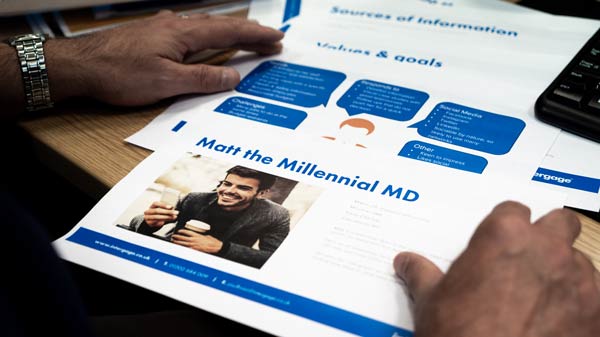How To Create A Buyer's Journey
How To Create A Buyer’s Journey
A successful inbound marketing strategy depends upon a well-defined buyer’s journey.
The buyer’s journey is the foundation upon which all content campaigns are shaped.
Adhere to this sacred principle and you will earn business. Shun the path and you risk alienating potential customers and to compound matters, you will expend valuable resources doing so…
But what exactly do we mean by a buyer’s journey? The HubSpot definition is as succinct as it is accurate - ‘the research process someone goes through leading up to a purchase’. Something we can all relate to.
When faced with a dilemma - big or small - the average person will typically research their problem. Only once enough we have gathered enough information do we feel suitably informed to settle on a next step.
Think about the example of a punctured tyre - an inconvenience most of us have encountered. There is much to consider in the immediate aftermath.
To begin with, we need to know whether the wheel can be salvaged or if the damage is too severe. Whatever the prognosis, you will also have to find out who stocks your particular tyre, whether they can fit it for you, will they come to you (or will you have to get the wheel to them), and of course, how much they will charge you for the privilege.
The buyer’s journey breaks down this familiar routine, creating checkpoints at which marketing companies should tailor their content. While the tyre example may be peculiar to B2C companies, the process is the same for every buyer’s journey. Let us explain…
Awareness
We start with the awareness stage. It is at this point your potential new customer is encountering a problem. The likelihood is they are aware of an issue and they will conduct research into the matter, with a predictable set of searches, in a bid to identify, understand and frame the root cause.
But while your potential new customer may be new to the process, your marketing team will be fully-fledged experts. As such they can step in and make life easier for the researcher.
How exactly? By being front and centre throughout the awareness stage. By delivering helpful content. This can take the form of a blog, infographic, short video or social post… anything that adds value at this crucial juncture. The goal at this stage is helping not selling, the content is about the problem the customer is facing, not the product we are pushing.
From the customer perspective, as introductions go, this is a promising one.
Consideration
Having defined their problem, the potential customer now moves into the consideration stage. Here they research potential solutions – usually identifying several different approaches to solving the problem.
This presents an opportunity for marketers to prove helpful again. Regardless of whether you touched base in the awareness stage, you can still present helpful content. In B2B this may be with a whitepaper or webinar invitation, content that outlines several potential solutions along with guidance on how to select the right one for your needs.
If executed correctly, the chances are you will make a positive impression with your helpful content and begin to build build trust. Moreover potential customers will begin to look upon you favourably and consider you an authority on the subject. This could prove invaluable.
Decision
Finally a buyer reaches the all-important decision stage. Having garnered the requisite information and drawn up a shortlist of potential solutions they begin to look for vendors; they are settling on a preferred option. As you have probably guessed, the emphasis is on marketeers to present content at this final hurdle also.
A helping hand could take the form of a case study, video tutorial or well-structured pricing package – anything likely to make the decision-making process easier and less painful and (hopefully) win their business.
If your content helped progress them through the awareness and consideration stages respectively, there is a fair chance they will trust you thereafter. Suddenly a mutually beneficial partnership is established.
Creating A Journey
Awareness, Consideration and Decision make-up the three fundamental pit stops along every buyer's journey. Every bit as important as the signposts themselves however is remembering that all content relies on context.
Not every customer is the same. Each type of buyer has distinct characteristics that differentiate them from one another. Presenting the same content to all is therefore short-sighted.
A blanket approach pales in comparison to a tailored one and we do this by aligning the buyer's journey with a buyer persona - a semi-fictional portrait of a real-world, typical buyer type.
Only by referencing your personas can you hope to deliver the right information to the right person, at the right time, via the right channel. Only by referencing personas can you hope to truly make your content relevant.
With that in mind, when preparing a content plan, earmark certain material for certain stages. Then go one better; segment by persona.
By tapping into personas you can, for example, make an informed decision about who will benefit from a simple 'How-to' guide at the awareness stage and whether persona X would truly appreciate a technical whitepaper at the consideration stage.
Then test. If your data tells you otherwise, you can always ready a helpful blog post in its stead. Staying true to the course but agile enough to explore detours is sound practice.
Above all, approach the buyer journey not with a-one-size-fits-all outlook but a tailored one. Only then can you truly expect to attract, engage and delight in equal measure.
Want to know more about Inbound Marketing?







